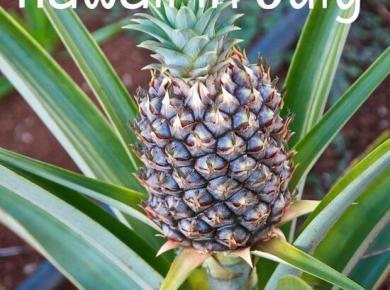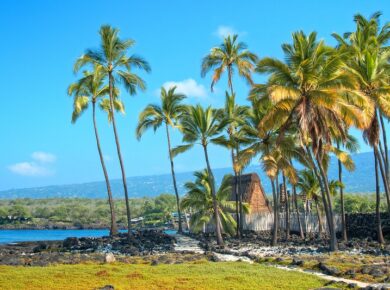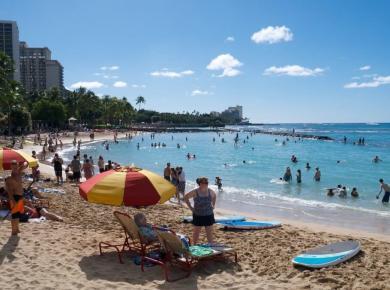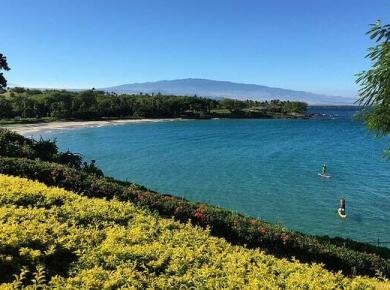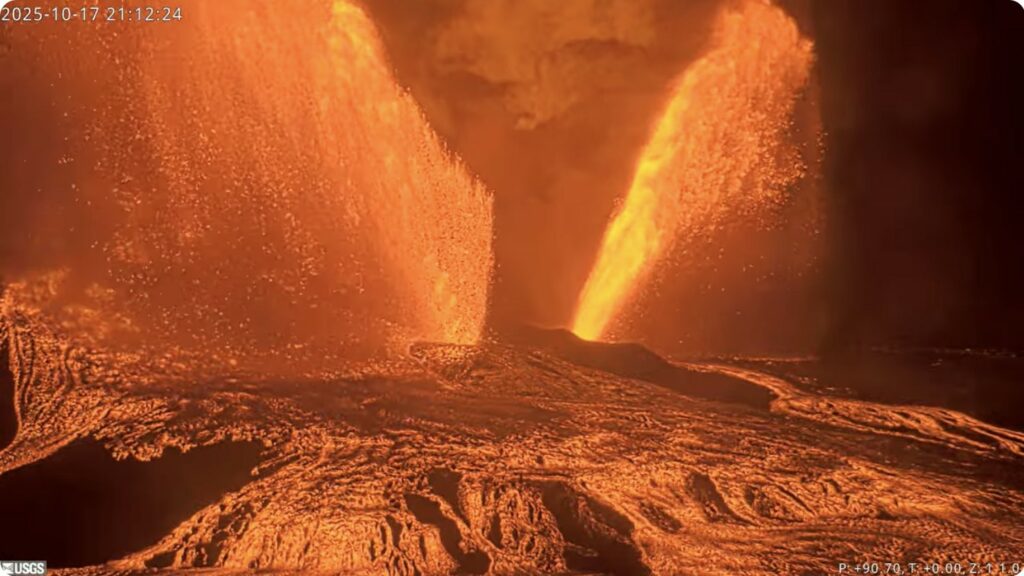
The 35th episode of this current Kilauea eruption series started and finished over the weekend. It’s astounding that these episodic lava fountain eruptions have continued for 35 times since December 23, 2024.
It almost seems like each episode is trying to outdo the previous one. Episode 35 produced the highest fountains yet of this eruptive series. Episode 34 reached fountain heights of over 1,300 feet, but 35 reached nearly 1,500 feet (460 meters). We wonder if this trend should continue, will it exceed the previous record height of 1,900 feet in 1959 with the Kilauea Iki eruption?
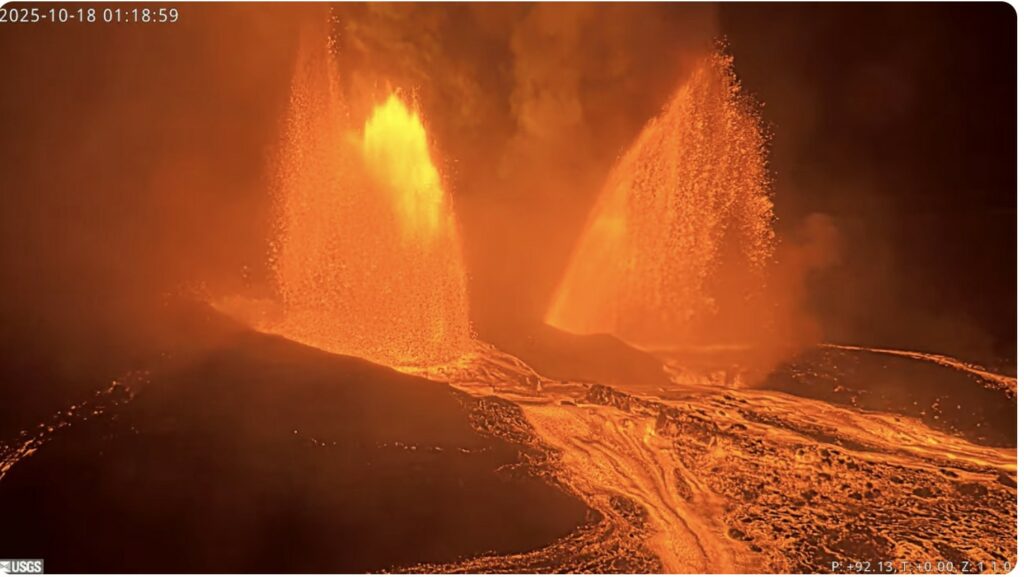
Another incredible aspect of the recent episodes is that there’s not one, but two, side-by-side lava fountains. What jaw-dropping scenes of of raw, untamed power.
Big Island Video News creates excellent summaries of the eruptions. Here’s their summary of episode 35.
According to the USGS Kilauea Volcano Observatory, experts think there could be an episode 36 in about two weeks. Per the latest update:
“The onset of inflationary tilt following the end of episode 35 indicates that the summit magma reservoir is repressurizing, as in previous episodes, and may produce another lava fountaining episode in the future. More time and data are needed to model forecast windows and determine when a subsequent lava fountaining episode is likely to occur. However, the next episode is likely at least two weeks away based upon the overall deflation of the summit during episode 35.”
How can you catch the next possible Kilauea eruption?
If you would like to try to catch the next potential eruption here are our suggestions:
- Keep an eye on the observatory updates, which will hopefully resume when the government shutdown is over. As you can see from the above quote, experts estimate the next episode could occur in about two weeks from the previous October 17/18 episode. As the next episodes approach, the updates will indicate a rough time prediction of the next episode. As of the October 27 update, experts estimate that Episode 36 may happen between November 5-11, with November 6-9 being the most probable time frame. UPDATE: As of November 2, the prediction is: “Models suggest a likely forecast window of November 4–8 for episode 36 with November 5-7 most probable.”
- When watching for new eruptions, I check in on the USGS V1 cam, which is the nearest video camera that slightly overlooks the vents.
- Plan your visit within the window of time that the experts estimate the next eruption will occur. Stay near Kilauea during that forecasted eruption period. If you’re planning a full vacation on Hawaii Island, we then recommend booking a stay on the Kona side after staying near Kilauea. That way, if the eruption didn’t occur during your stay near Kilauea, you can sort of hedge your bets in that you’ll still be within driving distance on the other side should the eruption occur then. By the way, eruption or no eruption, we recommend a volcano-area stay followed by a Kona-side stay.
- Plan to stay in the Volcano or Hilo area of Hawaii’s Big Island for the quickest access to Halemaumau Crater in Hawaii Volcanoes National Park where the eruptions have been happening. Recent eruption durations have lasted between roughly seven and 14 hours. Here are some recommended nearby accommodations:
- Volcano House is actually in the park and has a view of Halemaumau Crater. It’s my number one pick.
- Kilauea Lodge is a historic spot located just outside the national park.
- Volcano Rainforest Retreat Bed & Breakfast is also located outside the national park and a short drive to the park.
- Here’s a link to help you search for hotels and other accommodations near Hawaii Volcanoes National Park.
We will watch and wait patiently to see what Kilauea does next.

